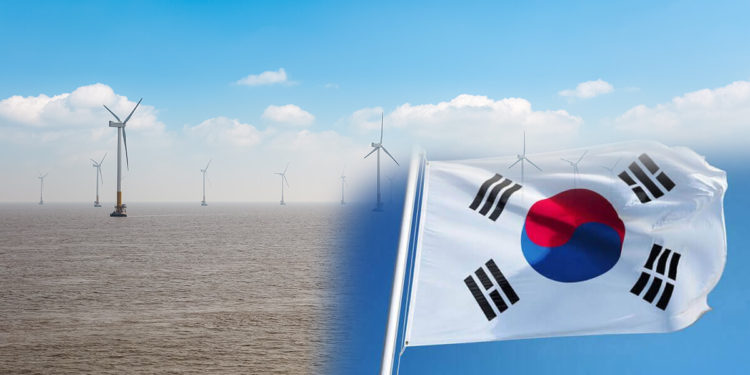South Korea announced its plans to build the world’s largest offshore wind power plant by 2030. To recover from the pandemic’s impacts, the Korea invested KRW 48.5 trillion ($USD 43.6 billion) for the wind power project. In the coastal town of Sinan, the government would construct the wind farm with an 8.2-gigawatt maximum capacity. With the objective of boosting Korea’s renewable energy industry, the project would double its existing wind power capacity.
“With this project, we are accelerating the eco-friendly energy transition and moving more vigorously toward carbon neutrality,” said President Moon Jae-in at the event. During the signing ceremony, President Moon also stated that the project is part of the country’s Green New Deal. Last year, the Korean government introduced the Green New Deal and invested KRW 73.4 trillion ($USD 65.9 billion) for renewable energy projects.
Partner companies and renewable energy advantages
Power distribution companies attended the event, including Korea Electric Power Corporation (KEPCO), SK E&S, and Hanwha Engineering & Construction. Other infrastructure developers, including Doosan Heavy Industries & Construction, CS Wind Corp, and Samkang M&T, attended the signing as well. By investing KRW 47.6 trillion ($USD 42.8 billion) in the project, these companies will provide utility and engineering support for construction.
“The government will provide every necessary support under the goal of making South Korea one of the world’s top five offshore wind powerhouses by 2030,” added Moon. Currently, South Korea’s wind power capacity is 1.67 gigawatt, but the project could increase it to 16.5 gigawatts by 2030. “We will shorten the project preparation period, which takes more than five years to start construction, and enact special laws to provide comprehensive support from location discovery to licensing.”
Based on the admin’s estimations, the Sinan project could create over 5,600 jobs. Apart from the employment opportunities, the project would also offer lifelong ‘offshore wind power pensions’ to local residents.
Additionally, officials said that the offshore wind farm would produce energy equivalent to the output of six nuclear reactors. “If the project proceeds as planned, it’s likely to help achieve about two-thirds of the country’s 2030 offshore wind target of 12 GW,” said Vince Heo, IHS Markit’s associate director.







